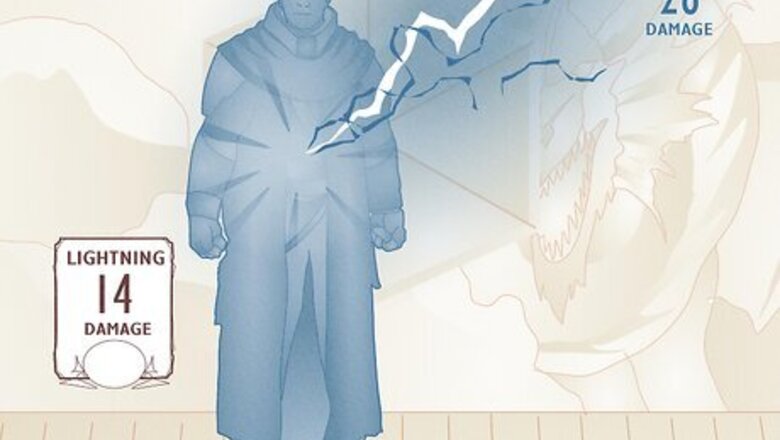
views
What is damage resistance, immunity, and vulnerability?

Resistance halves all incoming damage of a certain type. All damage dealt in D&D 5e is defined by its type—fire, cold, poison, bludgeoning, slashing, force, and so on. When a character is resistant to a certain type of damage, they’re less affected by it, so all damage dealt to them of that type is cut in half. For example, say your player character (PC) has resistance to lightning damage. If they get hit by a lightning bolt spell that normally deals 28 points of lightning damage, your PC would take half (14 points) instead.

Immunity means incoming damage of a certain type is reduced to zero. When creatures are immune to damage, it means they’re totally unaffected by it. So, if your PC is targeted by a damage type they’re immune to, they won’t take any damage at all. For example, if your PC is immune to poison damage and an enemy casts Poison Spray, they wouldn’t take any damage from the spell.
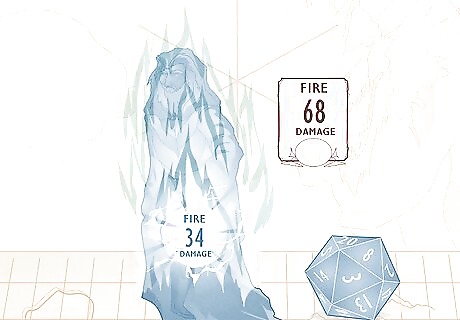
Vulnerability means incoming damage of a certain type is doubled. Vulnerability means a creature is especially susceptible to damage. When hit by a damage type they’re vulnerable to, a creature will take twice as much damage as they normally would—which can be an extra challenge (or advantage) in a fight. For example, say you’re fighting an enemy with vulnerability to fire damage. If you cast Fireball on that enemy and roll 34 points of fire damage, they’d actually take twice that (68 points).
Resistance, Immunity & Vulnerability Mechanics
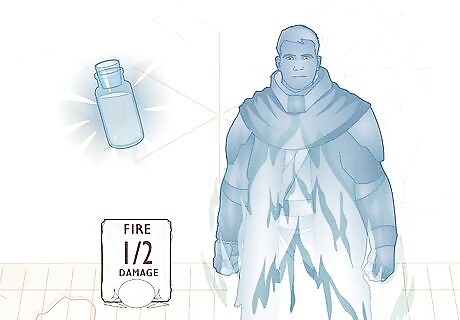
Damage resistance (and immunity or vulnerability) doesn’t stack. If your character has resistance to a certain type of damage and then gets granted the same type of resistance from a potion or some other effect, you won’t be able to halve the damage twice; they’ll still have the same level of resistance. For example, say your PC is a tiefling with fire resistance, and then they take a potion of fire resistance. That doesn’t amount to immunity or cutting the damage in half twice. If your PC were attacked with fire damage, you’d only get to halve the damage once.

Magical and nonmagical damage is differentiated in D&D 5e. While it’s possible for characters to have resistance to bludgeoning, piercing, and slashing damage, that actually only applies to nonmagical damage (unless explicitly specified). Magical damage from weapons bypasses this resistance, dealing full damage as usual instead of half. For example, say your PC has resistance to nonmagical slashing damage. So, if they’re attacked by a bandit wielding a nonmagical longsword, they’d take half damage from those attacks. On the other hand, if they were attacked by a bandit with a magical longsword +1, they’d take full damage from those attacks (because even though it deals slashing damage, the longsword’s damage is also considered magic).
Using Resistance, Immunity & Vulnerability in Quests

Learn creatures’ resistances and exploit them in future battles. While you might already know about a creature’s resistances if you’re a seasoned player, metagaming is discouraged; it’s best to play as though you don’t know them (unless your PC has a legitimate reason to). Regardless, as you fight creatures and discover resistances, you can incorporate that into subsequent encounters. For example, say your PC fights a horned devil for the first time, and that devil has resistance to cold damage. After fighting the devil, your PC might have cast a cold spell and discovered resistance. So, the next time you face a horned devil, you can avoid cold damage and tell allies to do the same. Remember that it’s okay to use a little trial and error to find a monster’s weak points (or, conversely, its strengths). As you get more comfortable fighting a particular type of monster, you’ll get more familiar with their resistances.
How to Implement Damage Resistances as a DM

Use resistances to encourage PCs to explore new damage types. Have you noticed that your players keep using the same abilities (and damage types) over and over again in battles? Use a wide variety of monsters with different resistances in battles to give players a subtle push, shake things up, and get them to find new ways to deal damage. For example, say the party’s wizard keeps casting Fireball or Cone of Cold in every battle. So, introduce an enemy with fire or cold resistance (or both). That way, if the wizard wants to deal significant damage to their enemy, they’ll need to rely on spells they might not usually bother with—which can be fun and exciting to play out! This is also a great way for sorcerers to use their class skills. Sorcerers are the most flexible spellcasters in D&D because they can use metamagic to change the type of damage dealt by their spells.

Adjust creatures’ resistances to throw veteran players a curveball. If you’re a DM, you might have veteran players at the table who are already familiar with some creatures’ resistances, immunities, and vulnerabilities. Consider throwing those players a challenge by giving resistances, immunities, or new attacks to creatures they might not be expecting such things from. For example, ghouls normally have a single immunity to poison damage. However, say the necromancer controlling them enchants the ghouls, giving them fire resistance too. When the players face off against those ghouls, they definitely won’t be expecting fire spells to do half damage—but it’ll challenge them to figure out what’s going on and find another way to defeat the ghouls.

Drop hints to players as to what creatures’ resistances might be. Even if you’re trying to keep players on their toes a little, don’t put them in unreasonably challenging situations. If you’re planning to give an enemy unexpected damage immunity, drop hits so the players get a sense of what’s coming—or, alternatively, give them a chance to find weapons or magic items that might be helpful. For example, if they’re about to fight a creature immune to fire damage, you might set the fight somewhere hot (like a fiery caldera or blazing underground forge) to indicate the creature is comfortable with fire. On the other hand, if you don’t plan on dropping hints, try giving players spell scrolls that deal damage other than fire. For example, you might let the party’s wizard stumble across a Cone of Cold scroll to use in battle.
Damage Resistances for Players
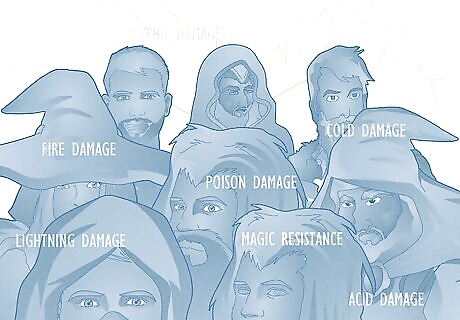
Several races have specific innate damage resistances. Depending on the racial bloodline you choose for your PC during character creation, you might get damage resistance, too. While you might be tempted to choose a race based on what you think is strongest, remember that every choice has pros and cons—so build the character you want to play rather than one based on potential resistance. Races with damage resistance include: Fire damage: Fire genasi and tieflings Poison damage: Dwarves, duergar, and yuan-ti Cold damage: Goliath Psychic damage: Githyanki and Githzerai Magic resistance: Deep gnomes Acid damage: Water genasi Lightning damage: Air genasi Necrotic and radiant damage: Aasimar Resistance to charm and immunity to sleep effects: Elves, half-elves, and eladrin Resistance to chosen breath weapon: Dragonborn
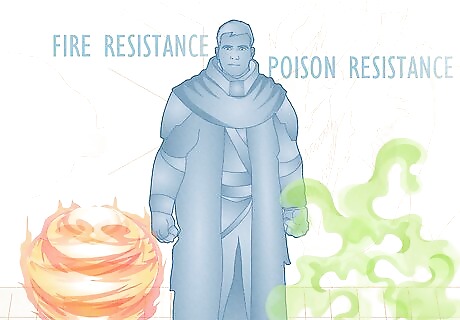
Fire and poison resistance can help PCs against a variety of spells. Fire damage, in particular, is pretty common in combat. Enemy spellcasters have spells like Fireball, Scorching Ray, Hellish Rebuke, while other hostile creatures like red dragons and fire giants have innate fire-based attacks. That’s why having fire resistance handy for your PC never hurts! If you don’t choose a race with natural resistance, you can also use spells like Fire Shield or a potion of fire resistance. Poison resistance can also be super helpful because there are plenty of potential enemies with magic or natural abilities (like fanged bites or claw attacks) that deal poison damage. So, if you’re interested in playing a race with natural poison resistance (like yuan-ti or dwarves), consider their resistance an extra perk!
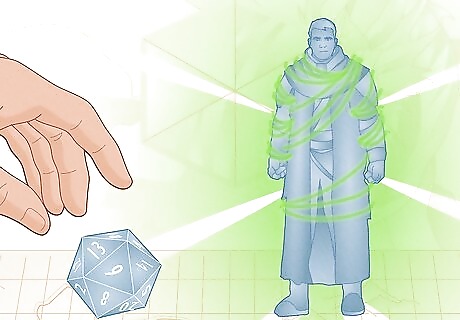
Magic resistance is rare for PCs but very useful. It works a little differently; when a character has magic resistance, they have an advantage on saving throws to resist spells. The only race with magic resistance is deep gnomes (also called svirfneblin); they can make Intelligence, Wisdom, or Charisma saving throws against spells with advantage, which can be life-saving in battle. For example, spells like Hold Person, Command, and Banishment all rely on Wisdom or Charisma saving throws—so the ability to roll with advantage against them is valuable. Advantage simply means rolling a d20 twice and taking the higher result, making your PC more likely to succeed on their saving throws.
Monsters with Damage Resistance

Different monsters (like undead or dragons) have varying resistances. If you’re wondering which monsters to throw at your players as a DM (or which damage-resistant monsters to be wary of as a player), there are a ton of different monsters in 5e with resistances.Try choosing a monster based on the kind of resistance you want to use in battle. Monsters with damage resistances or immunities include: Fire: Red dragons, fire elementals, devils, most demons, ghosts, shadows, hell hounds, yugoloths, and night hags. Cold: White dragons, ghosts, ice mephits, yetis, banshees, frost salamanders, bheur hags, frost giants, and boneclaws. Lightning: Air elementals, vrocks, liches, and many fiends (devils and demons). Acid: Black dragons, mimics, black puddings, and clay golems. Psychic: Constructs (like golems). Poison: Constructs (like golems), elementals, and fiends. Thunder: Slaads, air elementals, ghosts, allips, shadows, and nightwalkers. Necrotic: Many undead (ghosts, mummies, wights, revenants, vampires, and so on). Radiant: Many celestials (couatl, devas, solars, and so on).



















Comments
0 comment